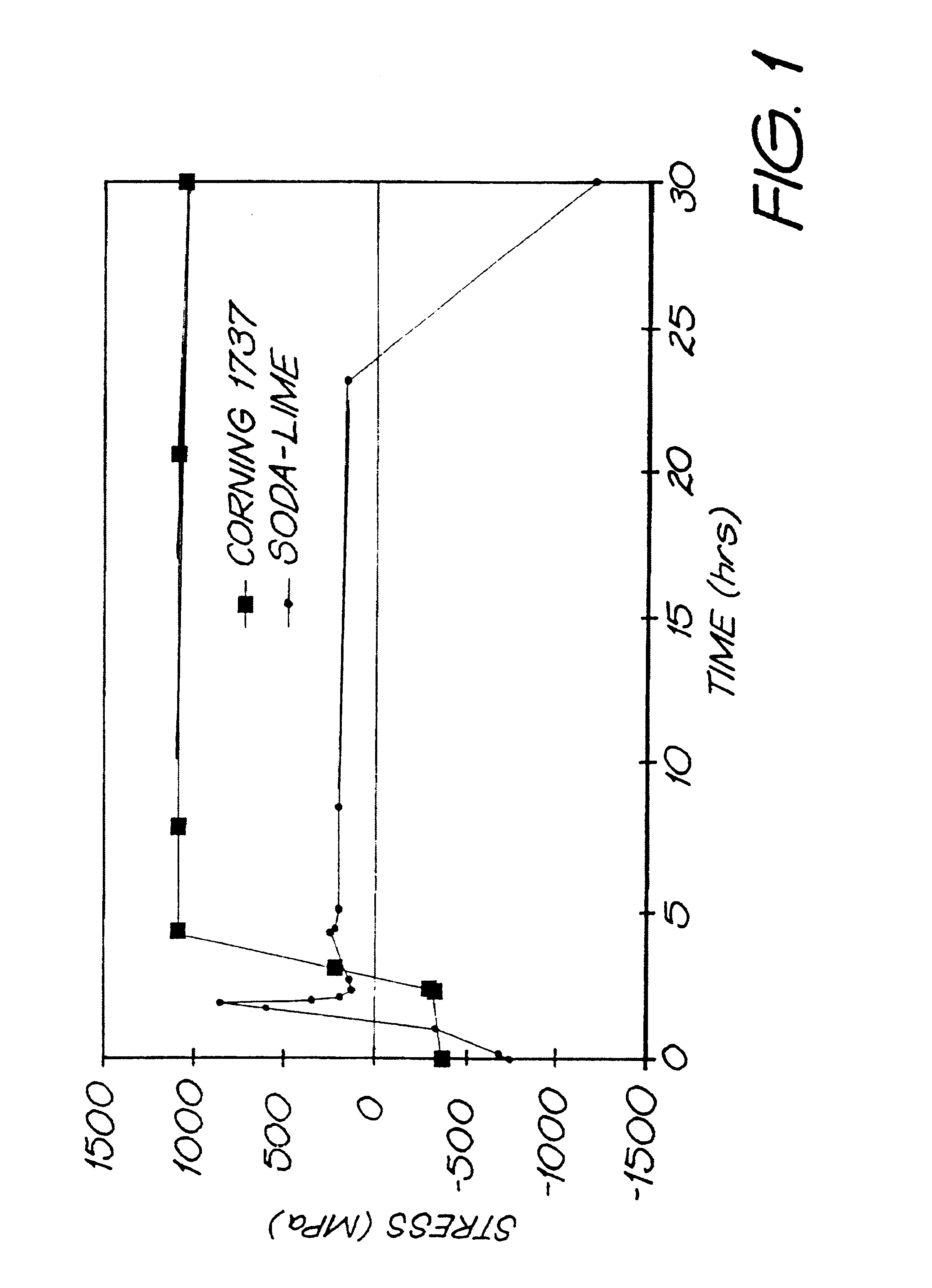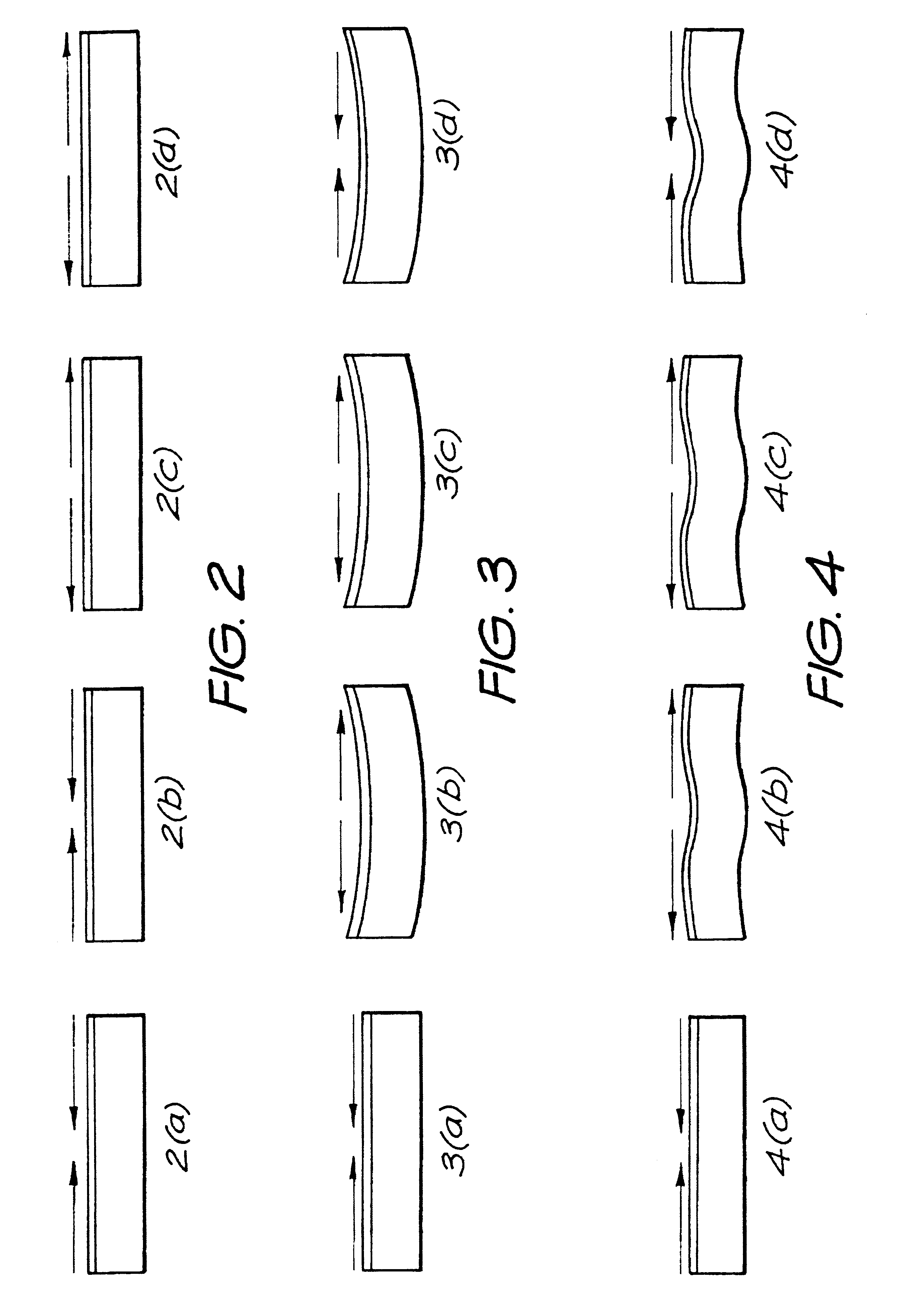Forming a crystalline semiconductor film on a glass substrate
- Summary
- Abstract
- Description
- Claims
- Application Information
AI Technical Summary
Benefits of technology
Problems solved by technology
Method used
Image
Examples
Embodiment Construction
The invention will now be described in detail with specific examples using soda lime glass and with reference to Corning 1737 glass by way of comparison, however the invention is equally applicable to other low temperature glasses.
For polycrystalline silicon active matrix liquid crystal displays, silicon is normally deposited in amorphous form onto a high strain point glass substrate such as Corning 1737. The amorphous silicon is then crystallised without exceeding the temperature of the strain point of the glass either by prolonged heating at low temperature in a furnace or with very short high intensity pulses from a light source such as a laser which result in minimal heating of the glass. Sometimes both of these steps are applied sequentially. The resulting polycrystalline material is then processed into the desired electronic device. By minimising the thermal expansion difference between the glass and the silicon, stresses due to thermal expansion mismatch can be...
PUM
| Property | Measurement | Unit |
|---|---|---|
| Length | aaaaa | aaaaa |
| Percent by mass | aaaaa | aaaaa |
| Percent by mass | aaaaa | aaaaa |
Abstract
Description
Claims
Application Information
 Login to View More
Login to View More - R&D
- Intellectual Property
- Life Sciences
- Materials
- Tech Scout
- Unparalleled Data Quality
- Higher Quality Content
- 60% Fewer Hallucinations
Browse by: Latest US Patents, China's latest patents, Technical Efficacy Thesaurus, Application Domain, Technology Topic, Popular Technical Reports.
© 2025 PatSnap. All rights reserved.Legal|Privacy policy|Modern Slavery Act Transparency Statement|Sitemap|About US| Contact US: help@patsnap.com



